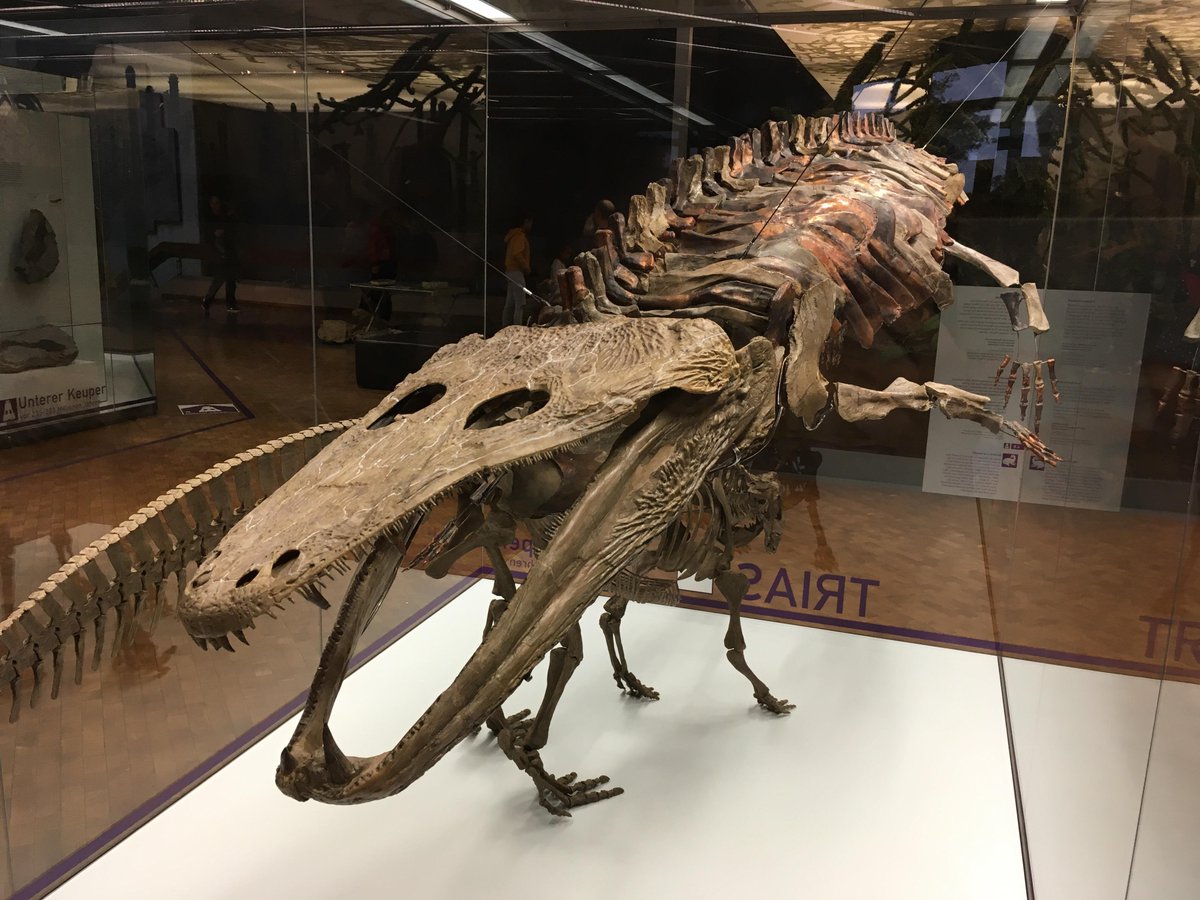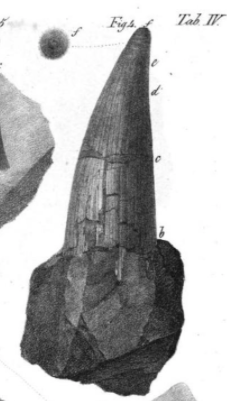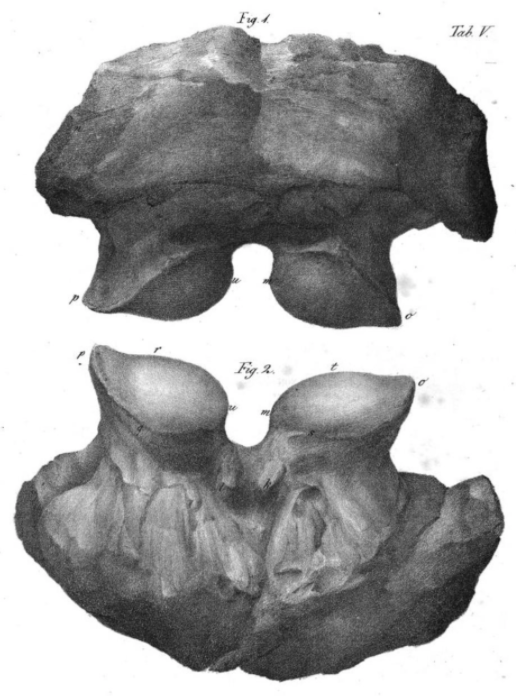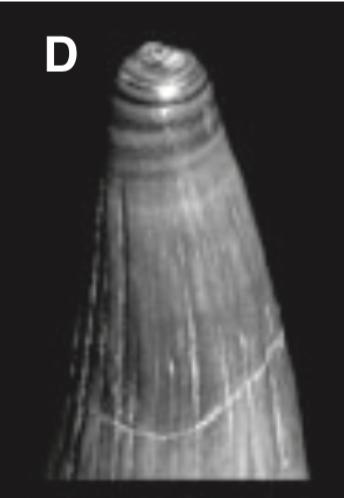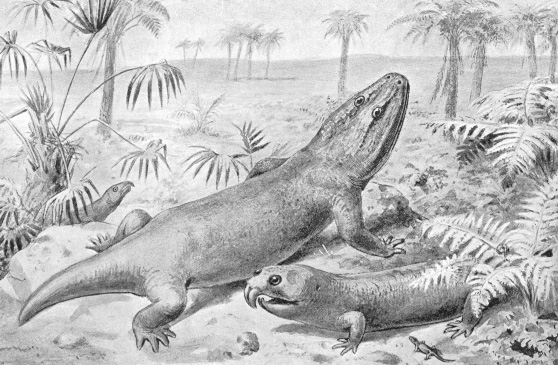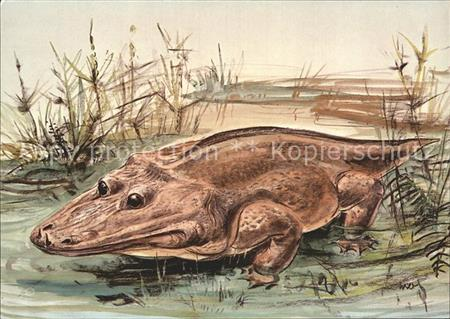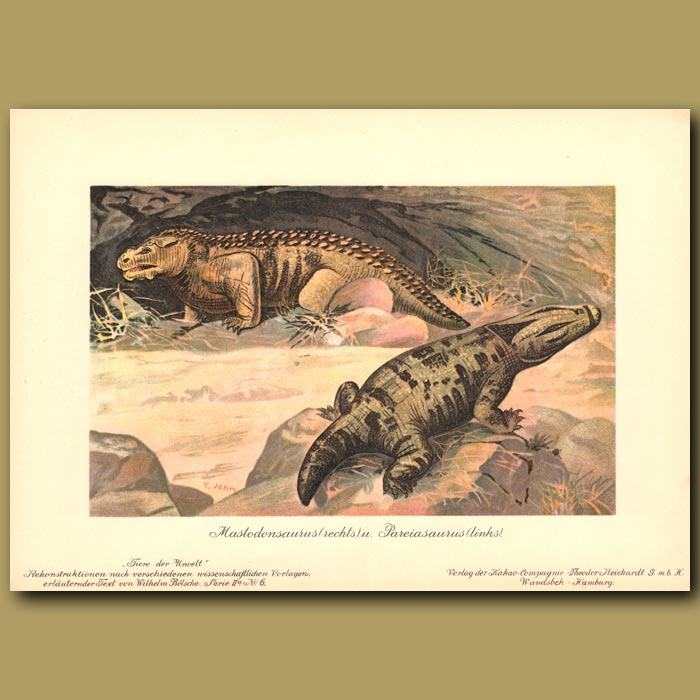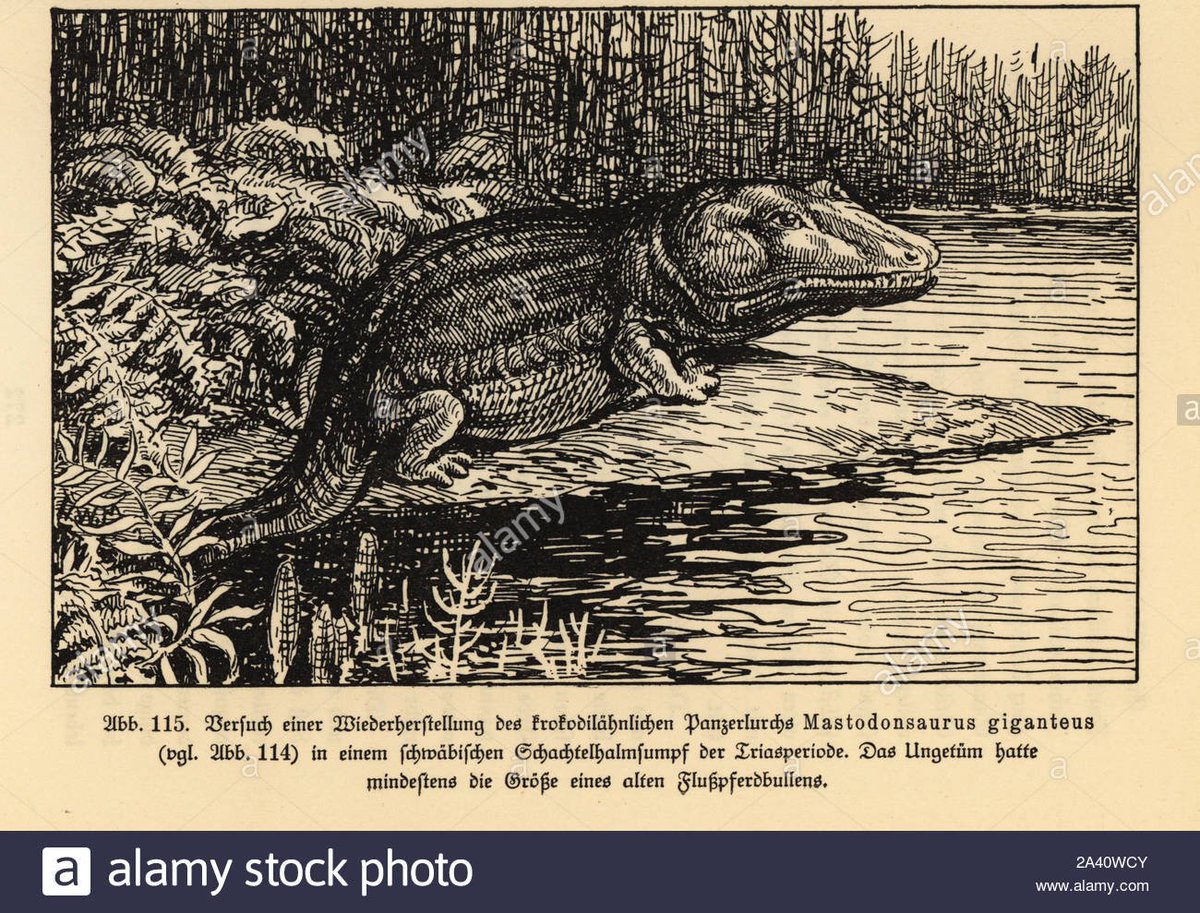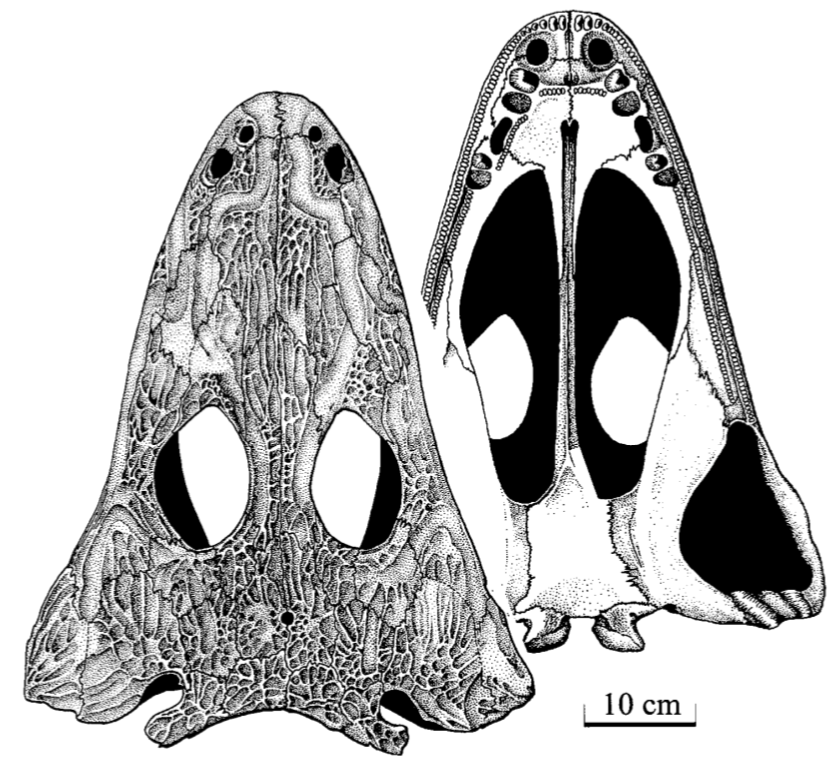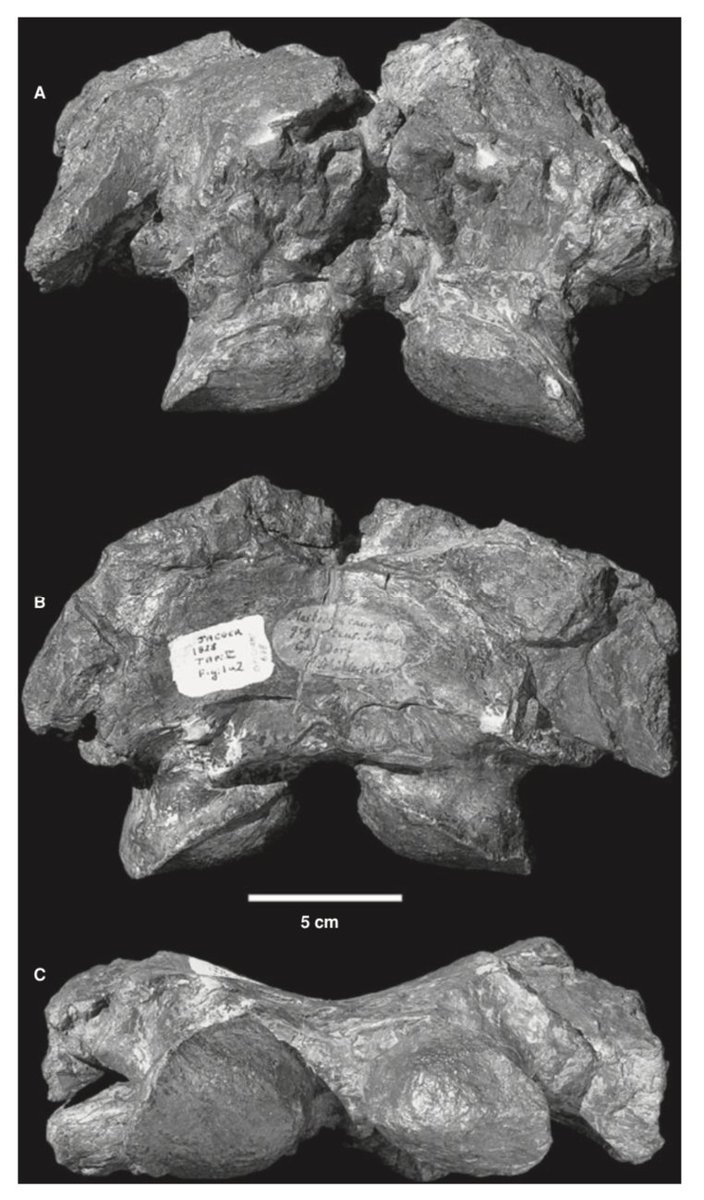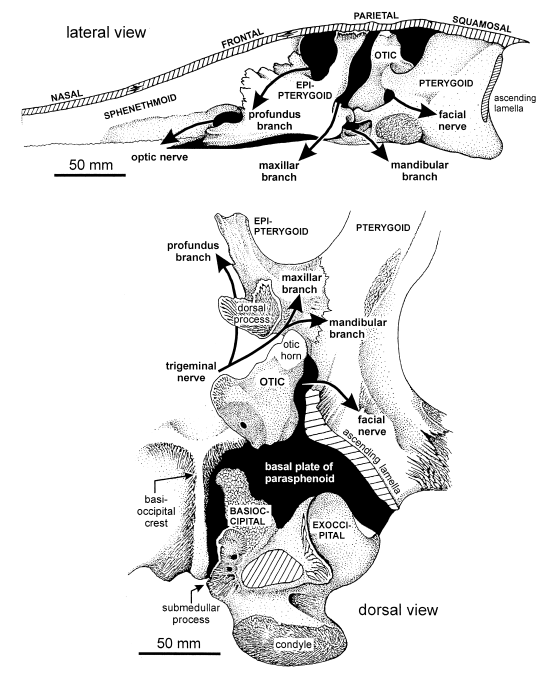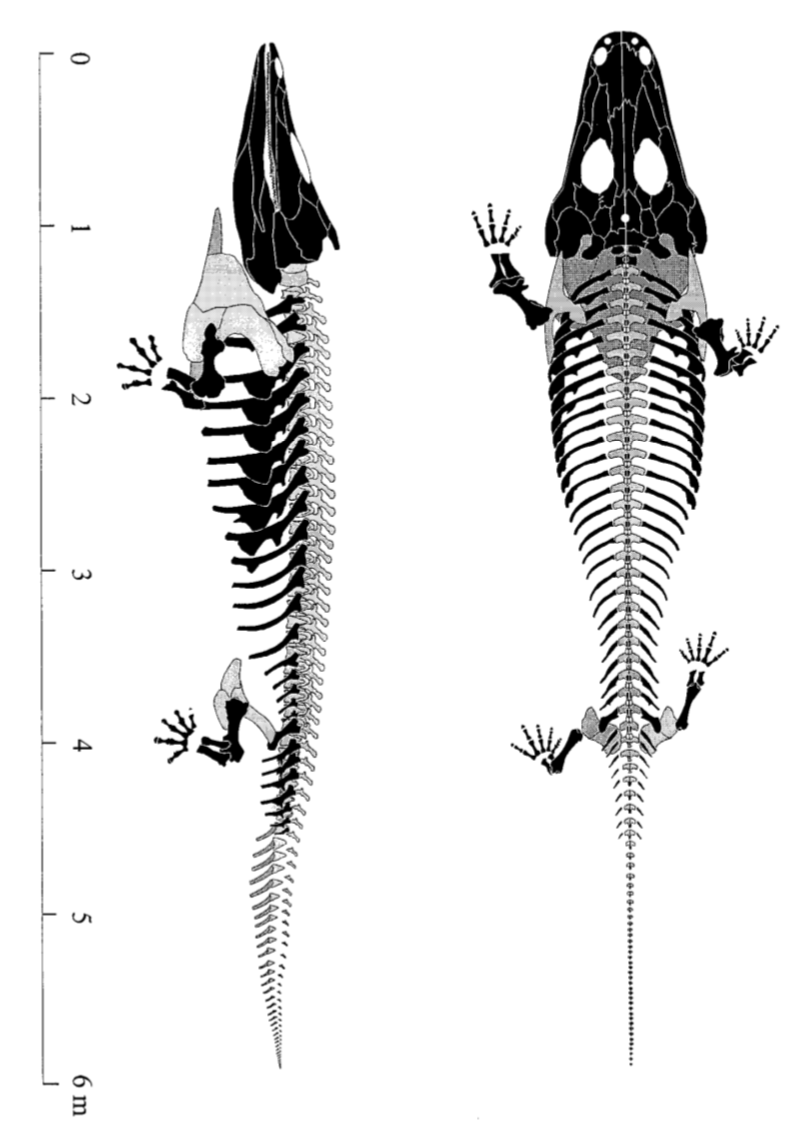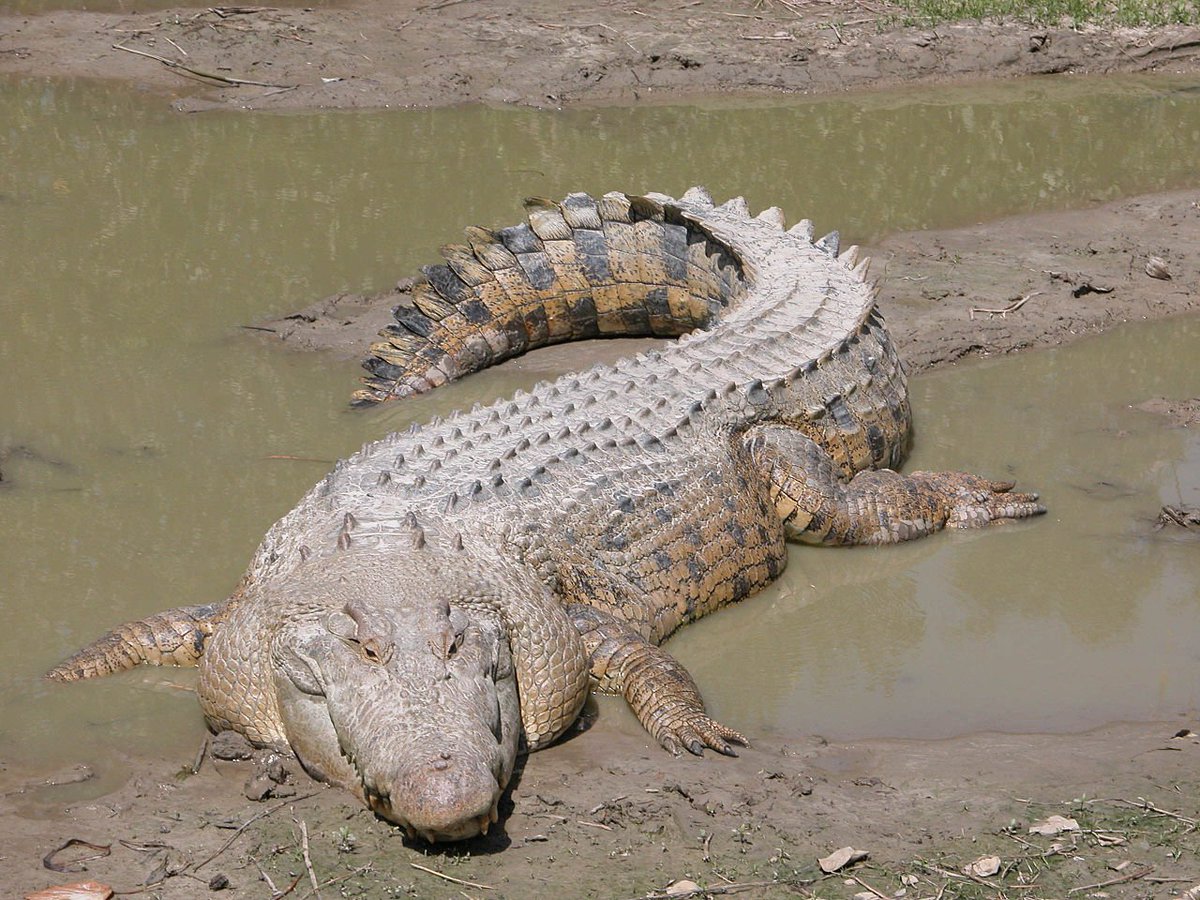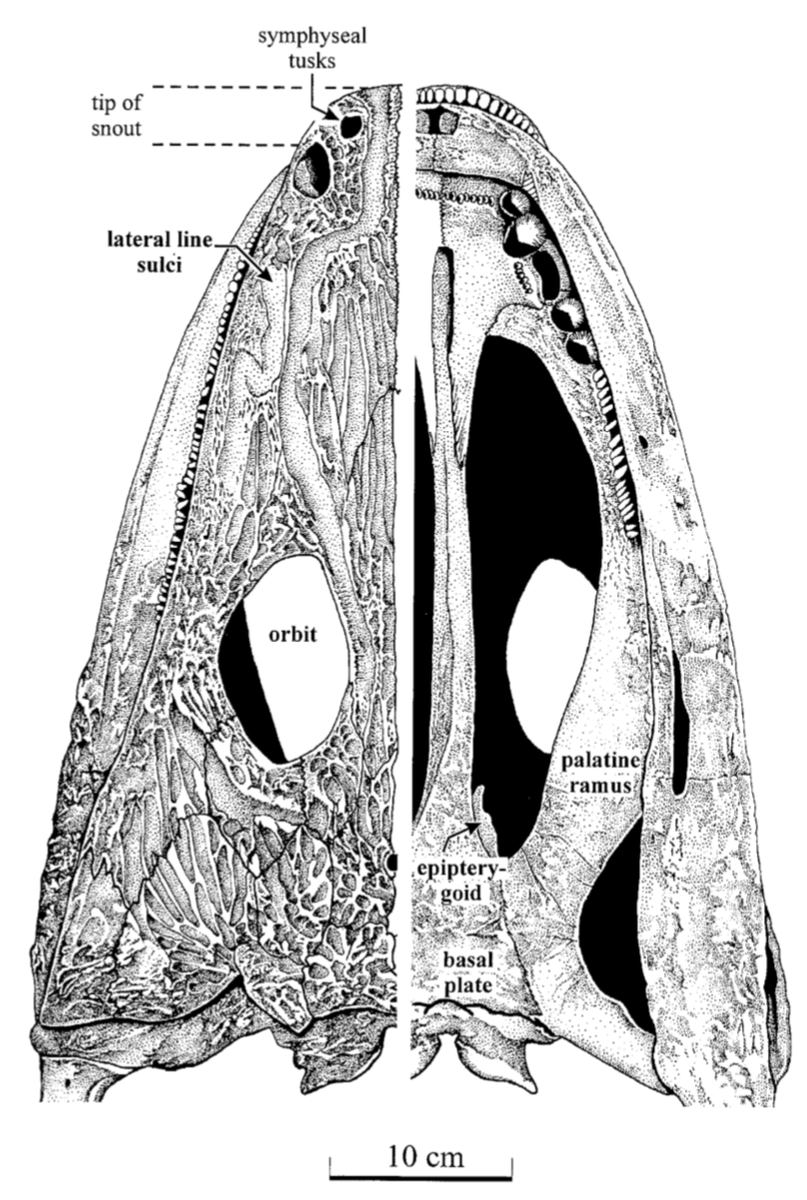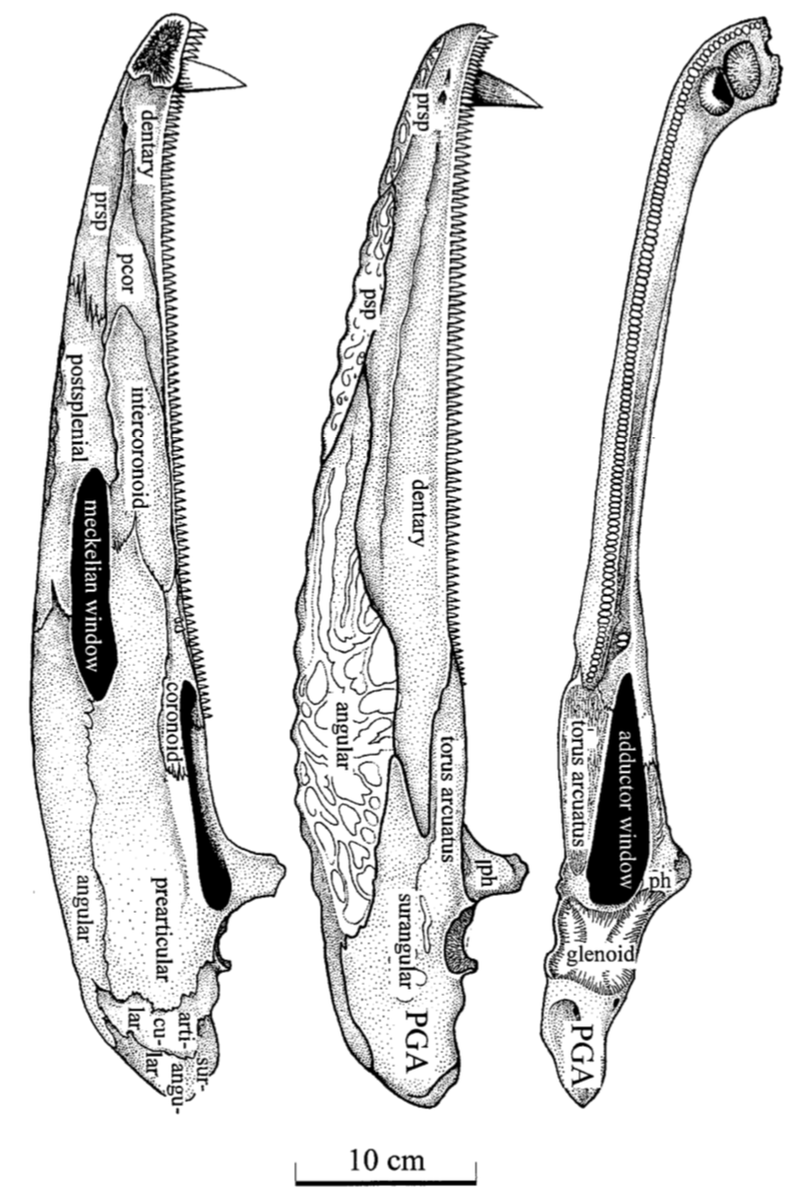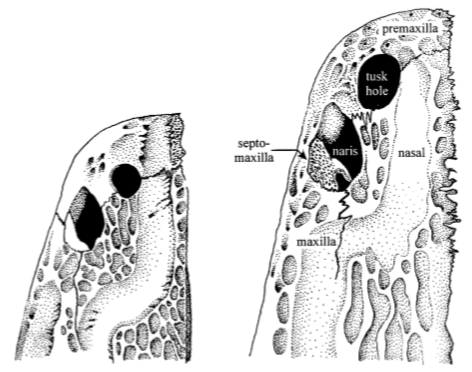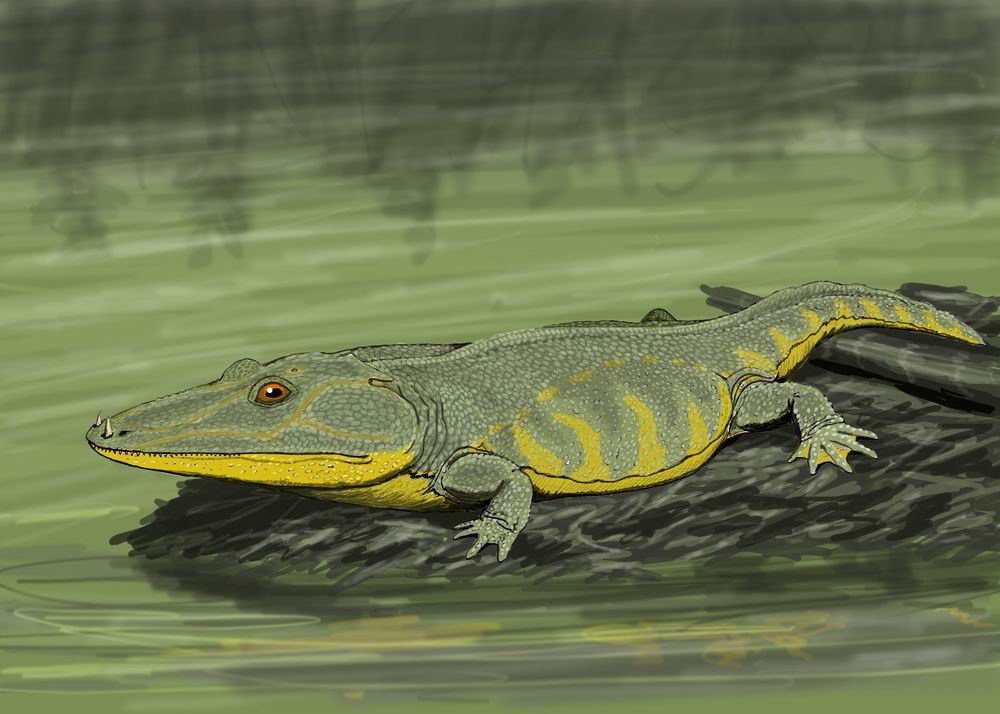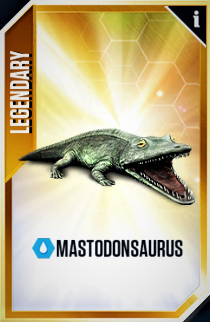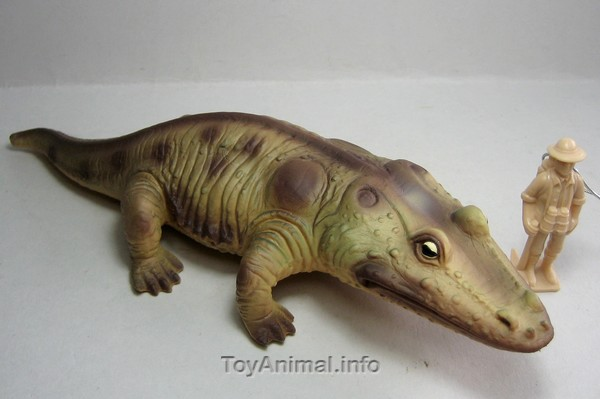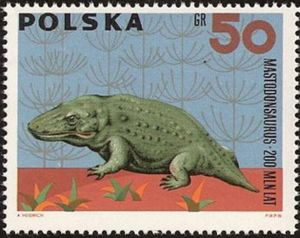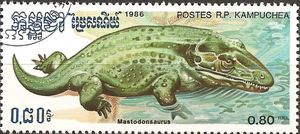Day 11 of #StereospondylSeptember: the OG temno, the capitosaur Mastodonsaurus from the Middle Triassic of Germany  !
!
#FossilFriday #scicomm
 : u/sfa83 (via Reddit)
: u/sfa83 (via Reddit)
 !
!#FossilFriday #scicomm
 : u/sfa83 (via Reddit)
: u/sfa83 (via Reddit)
Mastodonsaurus is one of the oldest temnos from a historical sense, named in 1828 by Jaeger for one (1) tooth, seen below ( https://bit.ly/3hmgYED ). Another taxon named by Jaeger for an occiput, 'Salamandroides giganteus,' was recognized a few years later to be Mastodonsaurus
Like the Pleistocene mammal, the name comes from the Greek word for 'wart,' 'nipple,' or 'breast' (there is clearly disagreement in the lit). Jaeger: "this tooth namely is especially distinguished by its teat-like tip." The tip:
 : Moser & Schoch (2007; https://bit.ly/2RuOXQN )
: Moser & Schoch (2007; https://bit.ly/2RuOXQN )
 : Moser & Schoch (2007; https://bit.ly/2RuOXQN )
: Moser & Schoch (2007; https://bit.ly/2RuOXQN )
Taxonomy was so bad in the 1820s that Jaeger didn't give his new genus a species name, which is how it ended up being M. jaegeri a year later. It remains known only from that one tooth, and there has been some "bending over backwards" to keep the name valid...
Rare for an extinct taxon, Mastodonsaurus has several common names in German:
-Zitzensaurier (literal translation)
-Froschsaurier ("frog lizard")
-Wickelzähner ("wound teeth bearer")
...and one broadly applied to temnos: 'crocomander' https://twitter.com/amnh/status/1107071566393823233
-Zitzensaurier (literal translation)
-Froschsaurier ("frog lizard")
-Wickelzähner ("wound teeth bearer")
...and one broadly applied to temnos: 'crocomander' https://twitter.com/amnh/status/1107071566393823233
Btw if you're wondering who came up with 'crocomander,' it goes back at least as far as a book by de Camp & de Camp in 1968: "something like a cross between an alligator and a bullfrog...We might call such a creature a ‘crocodile-salamander,’ or perhaps a ‘crocomander’.’
That name actually makes no sense if it's supposed to be  +
+  but I don't make the rules on hybrids
but I don't make the rules on hybrids 
 : excellent 1894 art by Joseph Smit feat. the rhynchosaur Hyperodapedon
: excellent 1894 art by Joseph Smit feat. the rhynchosaur Hyperodapedon
 +
+  but I don't make the rules on hybrids
but I don't make the rules on hybrids 
 : excellent 1894 art by Joseph Smit feat. the rhynchosaur Hyperodapedon
: excellent 1894 art by Joseph Smit feat. the rhynchosaur Hyperodapedon
Anyway back to science - Jaeger's occiput went on to become the type of the best known species, M. giganteus, which is now known from essentially the entire skeleton, which formed the dissertation work of Rainer Schoch (1999; https://bit.ly/32liEtJ )
Prior to Schoch's thesis, Mastodonsaurus was actually poorly known, but it now has entire publications on single bones!
Stapes: https://bit.ly/3meTPHC
Palatoquadrate: https://bit.ly/3k6YjhK
Brain ( ): https://bit.ly/3ihFszY
): https://bit.ly/3ihFszY
(these are all Schoch papers)
Stapes: https://bit.ly/3meTPHC
Palatoquadrate: https://bit.ly/3k6YjhK
Brain (
 ): https://bit.ly/3ihFszY
): https://bit.ly/3ihFszY (these are all Schoch papers)
This is one of the largest temnos known and the largest capitosaur, with a skull exceeding 1 m and an estimated body length around 6 m; for reference, this is the same size as in the largest living reptile, the saltwater crocodile!
 : Schoch (1999); Molly Ebersold
: Schoch (1999); Molly Ebersold
 : Schoch (1999); Molly Ebersold
: Schoch (1999); Molly Ebersold
After Schoch's studies, Mastodonsaurus now forms the go-to reference point for capitosaur comparative anatomy and is one of the most iconic Mesozoic taxa
Mastodonsaurus also exemplifies the more frequent anatomy when the lower jaw fangs pierce the skull roof, which is through a separate hole (not the nostril, as in Microposaurus), aptly labeled 'tusk hole' here
This accounts for the various reconstructions where you can see its teeth poking out of the skull roof
 : Dmitry Bogdanov (via Wikipedia)
: Dmitry Bogdanov (via Wikipedia)
 : Dmitry Bogdanov (via Wikipedia)
: Dmitry Bogdanov (via Wikipedia)
Like Microposaurus, Mastodonsaurus is a LEGENDARY beast in @JWorldTheGame
There is also a toy model of Mastodonsaurus, a rarity for lower tetrapods, although I'm not sure how easy it is to get nowadays. Mine is sitting somewhere in my parents' attic
It's also been posterized on stamps from both Poland and Cambodia (I have no idea what the Cambodia connection is)
 : http://colnect.com
: http://colnect.com
 : http://colnect.com
: http://colnect.com
And some more recent art by @MarkWitton to close out this thread https://twitter.com/MarkWitton/status/1278994576280375305

 Read on Twitter
Read on Twitter